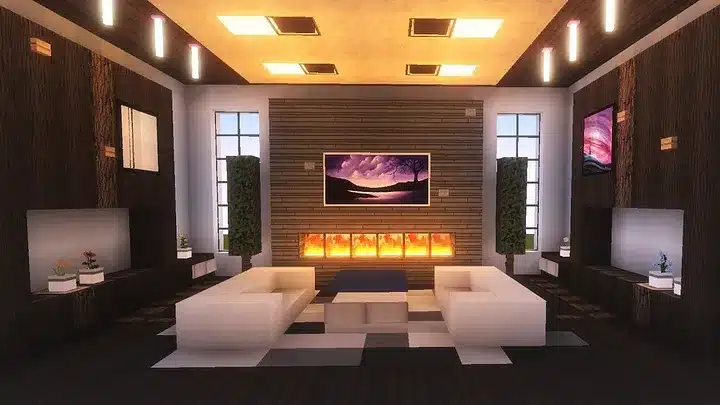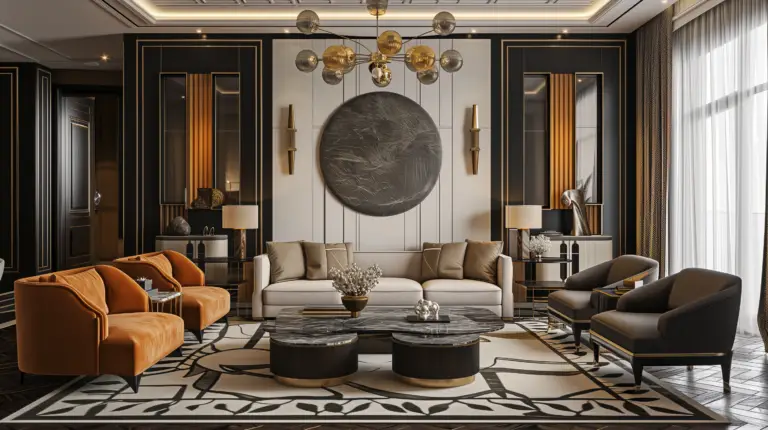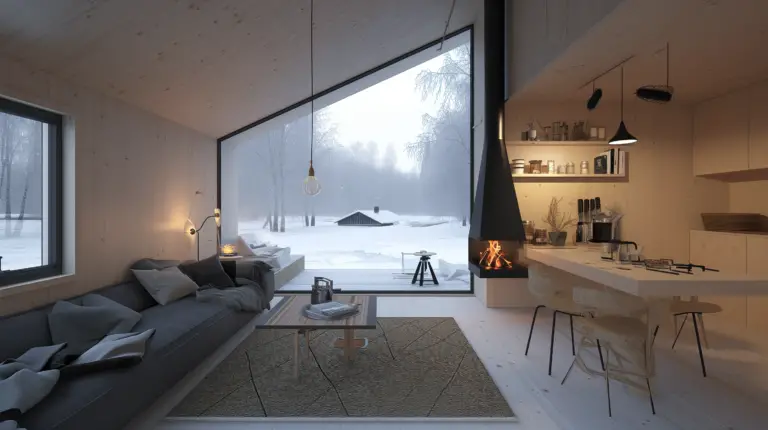Free Shipping On All Orders
20 Korean Interior Design Ideas 2024 You Need to Know

Principles of Korean Aesthetics
Respect and Minimalism
In Korean interior design, one of the key principles is minimalism, which emphasizes harmony and functionality. This style is founded on the belief that “less is more,” and it is an unpretentious approach that allows the elegance of simplicity to shine through. As you incorporate Korean aesthetics into your space, remember to prioritize functionality and practicality without compromising elegance.
The minimalist approach also reflects the cultural value of respect in Korean aesthetics. By simplifying the space, you are essentially giving prominence to the few items on display, showcasing their quality and importance. In this way, respect for the objects and the space itself is demonstrated.
Natural Beauty in Design
Another crucial principle of Korean interior design is the use of natural materials, which highlights the organic beauty of your space. By selecting high-quality, sustainable materials, you can enhance the aesthetic qualities of the environment while staying environmentally responsible.
Incorporate light wood elements and other natural materials like stone and linen to create an inviting, comfortable atmosphere. Avoid clutter and excessive decoration, and instead focus on showcasing the craftsmanship and thoughtful design of each object.
Craftsmanship in Korean Interior Design

Emphasis on Local Craft
In Korean interior design, there is a strong emphasis on utilizing local craftsmanship to create elegant and functional spaces. By incorporating handmade elements from wood, bamboo, stone, and bronze, the design celebrates the unique skills and traditions of local artisans.
As you explore the world of Korean interiors, you will notice the beauty and durability of wooden furniture, which is often crafted from local materials. Stone carvers and bronze workers also play a significant role in the design process, creating intricate details and decorative elements that enhance the overall aesthetic.
Bamboo, known for its versatility and sustainability, is another popular material in Korean design. From flooring to furniture, bamboo weavers create pieces that showcase both the strength and elegance of this natural resource.
Art and Furniture
Art and furniture are essential components of Korean interior design. Designers in Korea strive to craft inventive furnishings that showcase skilled craftsmanship while complementing the style and functionality of a space. Many of these pieces are created using traditional techniques that have been passed down through generations, emphasizing the connection to local culture and heritage.
When selecting art for your Korean-inspired space, consider including pieces that depict nature, as well as those that feature soothing colors and patterns. This can help to reinforce the design’s focus on simplicity and natural materials.
Integrating craftsmanship from local artisans and beautiful, functional art into your space is key to capturing the essence of Korean interior design. By doing so, you can create an environment that is visually stunning, comfortable, and reflective of the rich culture and history that informs this unique design aesthetic.
Modern Twist to Korean Design

Modern Spaces and Illumination
When it comes to contemporary design in Korean interior designing, you’ll notice that modern spaces often focus on enhancing natural light. To achieve this, interior designers utilize large windows, gauzy white curtains, and modern skylights. By incorporating these elements, you can create a welcoming environment with a clean and minimalistic touch, typical in Korean design.
Adopt an open floor layout, which creates a sense of unity and allows to easily transition between functional spaces. You’ll find that the natural illumination is aptly complemented by soft, understated lighting, giving rooms an airy and comforting feel. Remember to select light fixtures with simple and sleek designs to preserve the minimalist essence.
Contemporary Fashion and Design
In contemporary Korean interior design, the focus is on blending the beauty of traditional elements with modern aesthetics. This can include introducing vintage Korean pottery alongside sleek and minimalistic furniture pieces for a balanced, stylish appearance. Pastel or near-natural shades are popular, as they allow for a harmonious combination with other colors and motifs in the room.
To enhance the modern touch, you can incorporate statement decorative pieces from popular Korean fashion brands or artworks by renowned Korean artists. These elements not only add a touch of sophistication to your space but also bring a fresh perspective to the arrangement. Keep in mind that functionality plays a critical role in contemporary Korean interiors, so when choosing furniture, look for simple, clean lines that are both comfortable and practical.
Influential Korean Designers

Seoul-Based Designer: Jung Wook Han
Jung Wook Han is a renowned designer based in Seoul, known for his innovative and captivating designs in the realm of furniture and interior design. With a keen eye for detail and a unique blend of cultural influences, Han’s work showcases his remarkable talent and dedication to the art. As you explore his creations, you’ll notice a harmonious blend of tradition and contemporary aesthetics, making his works true masterpieces in the field of Korean interior design.
Exploring Designer Portfolios
Embarking on your journey to discover the world of Korean interior design, it’s essential to dive into the portfolios of various designers who have contributed to shaping the industry. Apart from Jung Wook Han, other influential designers include:
To better understand the influence and innovation these designers have brought to the world of Korean interior design, we highly recommend delving into their portfolios and examining the essential elements, inspiration, and techniques that embody their work.
Frequently Asked Questions
If you liked this post about Korean Interior Design, don’t forget to follow us on Pinterest so you don’t miss any more interior design news!





